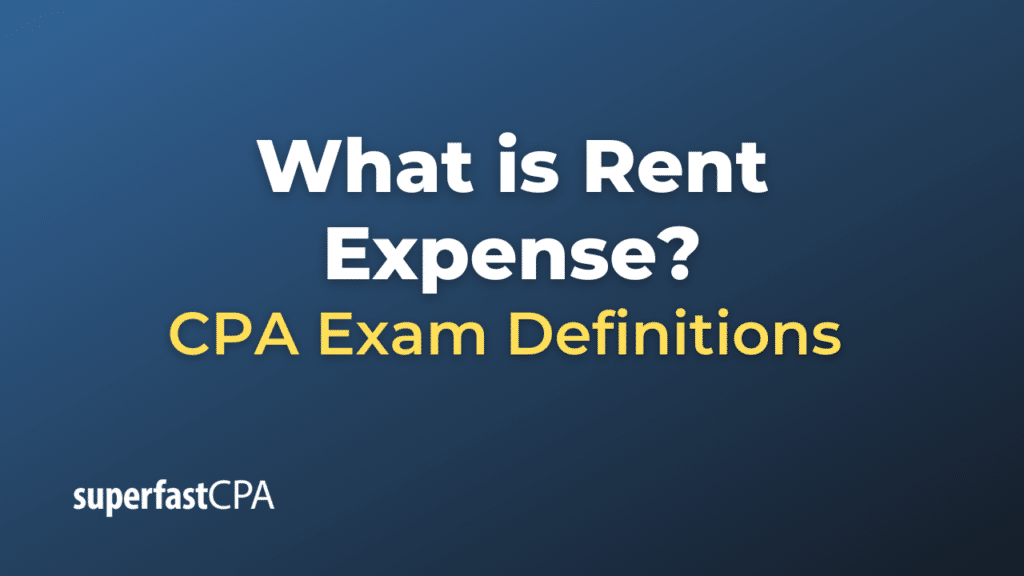Rent Expense
Rent expense refers to the cost incurred by a business or individual for using property or equipment owned by someone else. This is typically recognized in the accounting period in which it is incurred. In the context of a business’s financial statements, rent expense is usually reported on the income statement as an operating expense.
When a business leases a space or equipment, it does not own those assets, but it has the right to use them in exchange for periodic payments. These periodic payments, often made monthly, are recorded as rent expense.
Example:
ABC Tech Inc. leases an office space in downtown for its operations. The monthly rent is $10,000. Every month, ABC Tech Inc. will recognize a rent expense of $10,000 on its income statement. Over a year, the total rent expense reported would be $120,000.
It’s important to differentiate between “Rent Expense” and “Rent Payable”:
- Rent Expense: This is the amount recognized on the income statement, reflecting the cost of using the rented property or equipment during a specific period.
- Rent Payable: This is a liability account that might appear on the balance sheet if the rent has been incurred but not yet paid. For instance, if ABC Tech Inc. hasn’t yet paid the rent for the last month of the year, $10,000 would appear as rent payable on the balance sheet at year-end.
With the introduction of new lease accounting standards, such as IFRS 16 and ASC 842, the way leases (especially long-term leases) are accounted for on the balance sheet has changed for many companies. Depending on the lease’s nature, it might now be required to recognize a right-of-use asset and a lease liability on the balance sheet. However, the basic concept of recognizing the cost of using someone else’s property or equipment as rent expense remains consistent.
Example of Rent Expense
Let’s illustrate the concept of rent expense with a fictional example.
Bella decides to open a boutique in a popular shopping district. She finds a prime storefront but doesn’t have the capital to buy the space. Instead, she negotiates a lease agreement with the property owner.
Lease Agreement:
- Monthly rent: $5,000
- Duration: 12 months
- Payment: Due by the 5th of each month
Scenario:
- January:
- Bella’s Boutique starts operations on January 1st.
- By January 5th, Bella pays the $5,000 rent for the month.
- In her January income statement, she records a rent expense of $5,000.
- February:
- Business is picking up, and Bella gets busy.
- She forgets to pay the February rent by the 5th.
- On her income statement for February, she still recognizes a rent expense of $5,000.
- However, since she didn’t pay the rent on time, she will also have a “Rent Payable” liability of $5,000 on her balance sheet as of the end of February.
- March:
- Realizing her oversight, Bella pays $10,000 on March 3rd to cover both February and March rents.
- The March income statement will again show a rent expense of $5,000.
- The “Rent Payable” liability on the balance sheet will go back to $0 after the payment.
By the end of the year, Bella’s Boutique will have a total rent expense of $60,000 ($5,000 x 12 months) on its income statement. This reflects the cost Bella incurred for using the storefront property throughout the year.
This example demonstrates how rent expense is recognized each month, irrespective of when the payment is made (as evident in February). The payment timing impacts the rent payable on the balance sheet but not the monthly expense recognized on the income statement.













